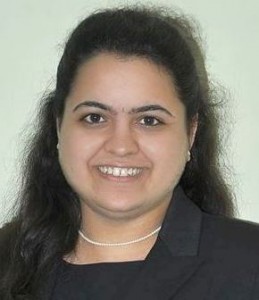July 2021 – present: Research Associate
Nov. 2019 – Jun 2021: Research Assistant
School of Physics and Astronomy,
Office 605, Kelvin Building, University of Glasgow
G12 8QQ Scotland.
Email: Sargam.Mulay@glasgow.ac.uk
Tel: +44 141 330 7111
Biography
Dr. Sargam Mulay obtained a Ph.D. in Solar Physics from the University of Cambridge, UK in 2018. She had an opportunity to work with Dr. Helen Mason and Dr. Giulio Del Zanna on the topic of solar active region jets. After completing PhD, she joined as a postdoc at the Inter-University Centre for Astronomy and Astrophysics (IUCAA), Pune, India. She worked with Prof. Durgesh Tripathi for 1.5 years on sigmoid observations. Since 2019, she is a research assistant with Prof. Lyndsay Fletcher at the University of Glasgow, UK and she is working on spectroscopic observations of solar flares.
Research
Her research interest includes observational X-ray and UV spectroscopy, solar radiophysics, reconnection in solar flares, coronal heating, sigmoids and jets in the Solar atmosphere.
During her Ph.D., she focused on understanding the temperature structure of active region jets using data from several space-based observatories such as the SDO (AIA, HMI), Hinode (EIS, XRT), RHESSI, IRIS and WIND/Waves. Combining imaging and spectroscopic observations from multiple instruments facilitated her to measure the physical parameters of jets (temperature, electron number density, filling factor, emission measure, velocities (plane-of-sky, nonthermal and Doppler)) and study their relationship with other phenomena such as H-alpha surges, solar flares, nonthermal type-III radio bursts and soft/hard X-ray emission. This comprehensive investigation of AR jets extended our knowledge and the study provided substantial constraints for theoretical modelling of the jets and their thermodynamic nature.
Link to her Ph.D. thesis – https://www.repository.cam.ac.uk/handle/1810/277700
During her tenure at IUCAA, she worked on the temperature structure of sigmoids during various phases of the solar flare as well as during sigmoid eruption. This study benchmarks different techniques (emission measure and filter-ratio methods) available for temperature estimation in solar coronal structures.
At the University of Glasgow, she has been studying the turbulence in the solar flares using spectroscopic observations from IRIS satellite. The research includes understanding the nature of emission from molecular hydrogen by deriving its physical properties from IRIS spectra.
ORCID and List of publications
